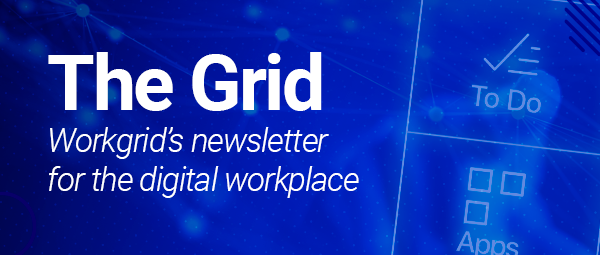What is an AI Assistant?
An AI Assistant, also known as an enterprise copilot, virtual assistant, or digital assistant, is a technology that is designed to interact with humans in a natural and conversational manner. It uses various technologies to understand, process, and respond to human language, performing various functions such as automating tasks, providing relevant information, and answering questions.
By harnessing natural language processing (NLP), which enables the assistant to understand the meaning behind human queries, the Assistant breaks down sentences, analyzes grammar, and identifies keywords to derive intent.
Another crucial technology AI Assistants utilize is generative AI, which allows the assistant to generate dynamic and personalized responses, adapting to the context of the conversation to provide the most relevant information. Through a combination of these technologies, conversational AI Assistants can seamlessly communicate with users, providing helpful and accurate information in a human-like manner.
Integrating an AI Assistant for work with your digital workplace, including enterprise applications, knowledge bases, and even documents, enables employees to easily access information and act directly from the AI Assistant interface without having to jump between systems. For example, through an AI Work Assistant, employees can submit IT tickets, draft emails, and update sales records in one conversational interface.
AI Assistant Use Cases
When it comes to AI Assistants for business use, there are several options available for companies to consider purchasing. AI Assistants designed for the digital workplace are most commonly called AI Work Assistants or Copilots. These are not single-use assistants tied to a specific use case, such as transcribing meetings or writing code.
Instead, they are designed to enhance productivity, improve communication, and streamline workflows for employees across a range of use cases within an organization. Let's take a look at over 50 examples of how you could utilize an AI Assistant.
50 Common AI Assistant Use Cases by Function
Information Technology
IT Help: Help employees resolve technical issues. Simply ask the question and the assistant will present knowledge articles and/or will initiate an IT help desk request.
Ticket Status Updates: Keep employees up to date on the status of their change request, from change management to incident management, with updates delivered in real-time from the source system to the AI Assistant.
Equipment Ordering: Allow employees to easily browse and order equipment across your IT catalog, from new laptops to peripherals, enabling seamless checkout right from the assistant.
Software Provisioning: Enable employees to search for approved software and obtain access to software from your service catalog such as ServiceNow directly through the AI Assistant.
Proactive Diagnosis: Help employees diagnose IT issues such as device slowdowns. The AI Assistant can provide proactive suggestions for solutions and initiate actions based on the employee's input.
IT Procurement Approvals: Quickly review IT procurement approvals – simply review details, submit comments, and approve or reject in a few clicks.
IT Training: Nudge employees when they have a training coming up or past due with direct access to your learning management system for easy completion.
Project Management: Help employees manage their assigned tasks and projects in systems such as Jira with conversational access data. Employees can ask questions such as “What tickets are assigned to me?” and receive details through the AI Assistant so they can quickly take action.
Content Generation: Assist with content including generating support articles, editing existing content, drafting a response to customers, or summarizing support issues with generative AI.
Communications: Send proactive IT notifications and communications such as planned or unplanned outages, scheduled maintenance windows, new phishing scams, and many more.
Human Resources
Generate HR Content: Quickly create HR content such as job posting descriptions, interview questions, policy documents, and surveys, or use generative AI to gather sentiment analysis for surveys and feedback.
Find HR Information: Simplify finding information buried across documents, knowledge bases, and enterprise apps using a conversational interface from details on vacation policy and company holidays to open enrollment and benefit information such as pay.
HR Case Management: Manage HR tickets all in one place. Submit and track HR requests directly from the AI Assistant to keep employees up to date with ease.
Employee Onboarding: Support the onboarding process by answering questions about benefit enrollment, company policies, dress code, and more. AI Assistants can also help deliver communications, notifications, and tasks to employees at the right time during their onboarding journey (welcome messages, training information, surveys, etc. you name it!)
Learning Management and Training Development: Support employee development with proactive nudges for upcoming training, past-due training reminders, and streamlined training approvals delivered straight to employees from your learning management systems.
Performance Reviews: Help employees prepare for performance reviews with automated reminders of upcoming check-ins and reviews. The Assistant will nudge employees each quarter to schedule and prepare for a performance check-in to ensure an engaged and efficient review.
HCM and Award Approvals: Streamline HR approvals including promotions and awards. Information from business systems is consolidated into a single notification stream so employees can quickly review and approve requests right within the flow of work.
Leave Management: Seamlessly review personal information such as time off balance or policy information through the AI Assistant. Help foster positive work-life balance with proactive time off reminders and ensure routine actions are completed with timesheet reminders and approvals.
Content Moderation: An AI Assistant can help automate content moderation by searching across your intranet/wikis/etc. for any personally identifiable information. If something is detected a notification will be sent to the content admin to make adjustments, helping protect your employees and ensuring no PII is accidentally included in company documents.
HR Nudges: Proactively guide employees' attention to HR campaigns and initiatives such as taking surveys, recognizing peers, management training, and more to encourage an engaged workforce.
Sales & Marketing
CRM Alerts: Keep employees informed on sales opportunities with automated alerts when lead or opportunity records change or reach certain milestones. Not just for those who have a CRM license, the AI Assistant can keep your entire company or targeted audiences updated on milestones.
CRM Information Look Up: Whether you need to know what is set to close this quarter or the renewal date for a specific customer, employees can quickly search for data across your CRM such as contact details, opportunity records, and more through the AI Assistant’s conversational interface.
Copywriting: Marketing teams can use the AI Assistant to support content generation, such as blog posts, social media captions, and email newsletters. A sales representative on the other hand could use generative AI to draft personalized emails, targeted sales pitches, or summarize meeting notes and action items.
Asset Management: Help employees find the right marketing materials, directing them to the appropriate resources. An AI Assistant can streamline digital asset management for marketing and sales teams when connected to internal folders, systems, and documents such as SharePoint or Brand Guidelines. Employees can ask the Assistant for help to easily find brand guidelines, appropriate logos, font colors, approved marketing collateral, and templates from brochures to PowerPoint templates.
Sales Enablement: Streamline the way your sales representatives find information on the products and services you sell. By integrating your knowledge systems (whether information is stored within documents or a third-party knowledge repository) with the AI Assistant, representatives can ask questions about your products and services and obtain instant answers.
Summarize Content: Help sales teams efficiently engage with prospects throughout the sales cycle with content summarization. Sales reps can ask the AI Assistant to summarize emails from an email thread, contact, or even action items over a specific period.
Reporting Metrics: Automatically compile and surface metrics, key performance indicators (KPIs), trends, and more from your CRM systems, excel spreadsheets, and other sources to deliver daily, weekly, or monthly reports and actionable insights, helping employees stay informed and make data-driven decisions.
Sales Training and Coaching: An AI Assistant can integrate with your learning management and development tools to recommend training and coaching based on persona to help employees improve their skills.
RFP Management: Help sales representatives fill out RFPs, improving efficiency and reducing manual efforts in managing multiple requests. With an AI Assistant employees can also search across contracts to summarize and compare information , making it easy to find details usually buried in unstructured documents.
Marketing Notifications: Keep teams informed when new marketing campaigns are launched or when new collateral is available with targeted notifications delivered within the flow of work.
Communications
Content Generation: Use generative AI to quickly draft or obtain ideas for a wide range of content including press releases, social media posts, newsletters, and blog content. An AI Assistant can suggest variations in tone and style, streamlining brainstorming, and automating repetitive tasks, maintaining quality and allowing for faster content creation, freeing time for strategic planning.
Content PII Moderation: AI Assistants can help monitor community-driven collaboration and intranet site content for inappropriate or personal identifiable information (PII) that may have been unintentionally included across blogs, forums, and wikis.
Corporate News and Communication Campaigns: AI Assistants help communicators deliver timely, personalized notifications that appear directly via the assistant, helping to improve engagement and awareness of initiatives.
Intranet Activity: Help admins deliver the most effective content by using the AI Assistant to provide summaries of intranet engagement including likes and comments.
Reading Recommendations: Send employees a notification containing a list of new blog posts based on topics or authors they follow, helping enhance engagement with company-wide communications across your intranet.
Intranet Sentiment: Help content authors understand how content is being received by readers. Notifications include a summarized sentiment analysis of posts based on comments.
Birthday Notifications: Help build company culture with birthday celebration messages including wishing employees a happy birthday and reminding managers or peers.
Event Notifications: Nudge employees when a new company event that may be relevant to them has been added to a calendar, and encourage participation by prompting them to add to their calendar
Translate Content: Use generative AI to quickly translate business content – from company announcements to webinar presentations. Notification workflows can be configured to automatically send translations to an approver to ensure accuracy.
Office Holiday Reminders: Remind employees of upcoming holidays and closures with automated notifications that are targeted so that employees only receive updates relevant to them.
![[asset] communications-notification-q3-goals](https://images.ctfassets.net/z7p73u8c0thn/3kI7zS4ngqp7ItvZ4it7Az/d5558a0fe6831f41f56a251a2b615a10/communications-notification-q3-goals.png?w=955&h=700&q=60&fm=png&bg=transparent)
Procurement and Finance
Policy Updates: Inform employees of policy changes, upcoming deadlines, and other pending actions to ensure compliance.
Expense Management: Support expense management across the workplace with expedited approval processes and improved knowledge discovery. Enable managers to quickly approve expense reports and notify employees of their report status. Employees can also ask the Assistant to answer common questions about expense management – such as daily per diem and expense policies.
Purchase Order and Quote Approvals: Enable employees to quickly review and approve purchase orders, requisitions, invoices, or sales quotes with single-click approvals. Employees also receive real-time notifications enabling them to stay informed of status changes, such as whether they have been approved, rejected, or are pending.
Travel Management: Support employee travel by making information easy to access for common queries like “How do I book travel for work?” or “What is the travel per diem?” Proactive reminders ahead of upcoming work travel help ensure that employees are prepared for a seamless experience.
FAQ: Give employees 24/7 answers to questions and automate processes that are usually buried on a website for improved efficiency. Employees can use the AI Assistant to ask about everything from corporate credit cards to spending limits.
Finance Reporting: With a lot of report data living in spreadsheets, the AI Assistant streamlines sharing updates and metrics. Notify stakeholders of published reports to ensure timely review and decision-making with automated notifications that include report values from a spreadsheet.
Contract Data Extraction: Help employees find, summarize, and compare contract data. With integrations to systems and folders, the AI Assistant can help locate data from contracts, saving employees hours and providing a convenient way to search for and view details of contracts, invoices, or other financial documents.
Employee Productivity
Search and Summarize Emails: Help employees get quickly caught up on long, complex email threads by simply asking the AI Assistant to summarize the thread or summarize all unread emails. Employees can also quickly find emails, such as those from a specific sender or during a particular timeframe.
Content Generation: Use generative AI to streamline daily tasks by automating content drafting, enhancing creativity in content creation, summarizing content and reports, and handling routine tasks throughout the workday.
Calendar Management: Help employees quickly schedule meetings to enhance office productivity. Using the AI Assistant, employees can search their calendars for events and reserve time on their Outlook calendar through natural language chat and without having to navigate to another window.
Who's Out Notification: Notify employees about who will be out of the office for the day and week, making it easier for employees to plan their time accordingly.
People Finder: Find contact information for team members, peers, and co-workers through a conversational interface instead of searching through an employee directory.
Search Recent Files: Enable employees to quickly access and find recently modified files and files shared with them.
Café Menu: Automate a daily notification to targeted audiences or enable employees to simply ask “What’s for lunch?” The assistant delivers a relevant response based on persona attributes such as office location, making it easy for employees to find the lunch menu and feel engaged in the office.
Message Reminder: Proactively notify employees when a direct, group, or meeting chat message from Microsoft Teams has been left without a response.
Promote Wellness: Nudge employees to help promote wellness by suggesting focus time or breaks based on workload and recommending techniques to balance work and personal well-being throughout the day.
Project Status: Enable employees to use an AI Assistant to ask questions about projects they are involved in (via integrations with tools such as Jira, Confluence, etc.,) to understand various details about current tasks and tickets.
The Future of AI Assistants at Work
An AI Agent is an advanced form of artificial intelligence designed to perform tasks autonomously, simulate human-like decision-making processes, and continuously learn from interactions. These agents are bringing a new level of autonomy, proactivity, and scalability to the digital workplace. Unlike traditional AI systems that require explicit instructions for each task, AI Agents have the ability to operate independently, perform sensemaking, and are capable of handling complex scenarios with minimal human intervention.
Getting Started with the Workgrid AI Assistant
Today, bringing an AI Assistant to your workplace is easier than ever before with Workgrid. Our catalog of integrations and pre-built app templates provide a seamless, customizable experience for teams looking to get up and running quickly. Paired with our low-code builder, teams can quickly build out workflows using a drag-and-drop editor, accelerating time to launch and reducing burdens on IT teams.
As organizations adopt AI in various stages of maturity, there can be hesitation about when and how to bring an AI Assistant to the workforce. If you’re looking to better understand where your organization might get started, here are a few examples for each part of your AI journey.




